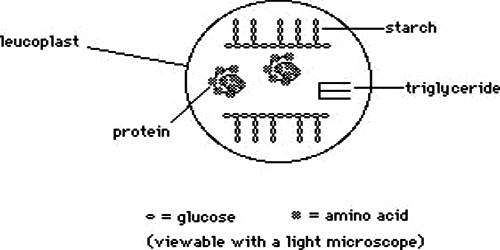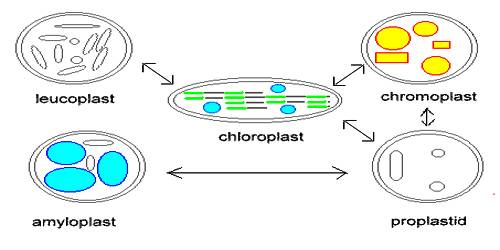Leucoplast: They are colorless, as they have no pigment. Leucoplast may be converted into Chromoplast or mainly chloroplast in contact with sunlight. In absence of light, the case may be reversed. They are the small colorless bodies occurring in the cytoplasm of plant cells and used for storing food material. They are responsible for storing food-related items for the plant, like lipids, proteins, and starches. Additionally, leucoplasts can be responsible for synthesizing amino acids and fatty acids. There are three types of leucoplasts: amyloplasts, elaioplasts, and proteinoplasts.

Position: Leucoplasts are present in the cells of organs like root, underground stem etc. which do not come in contact with sunlight.
Shape: Leucoplast may be semicircular or tubular in shape.
Function: They serve various functions, for example, storage of starch, lipids, or proteins. Their main function is to store food.













